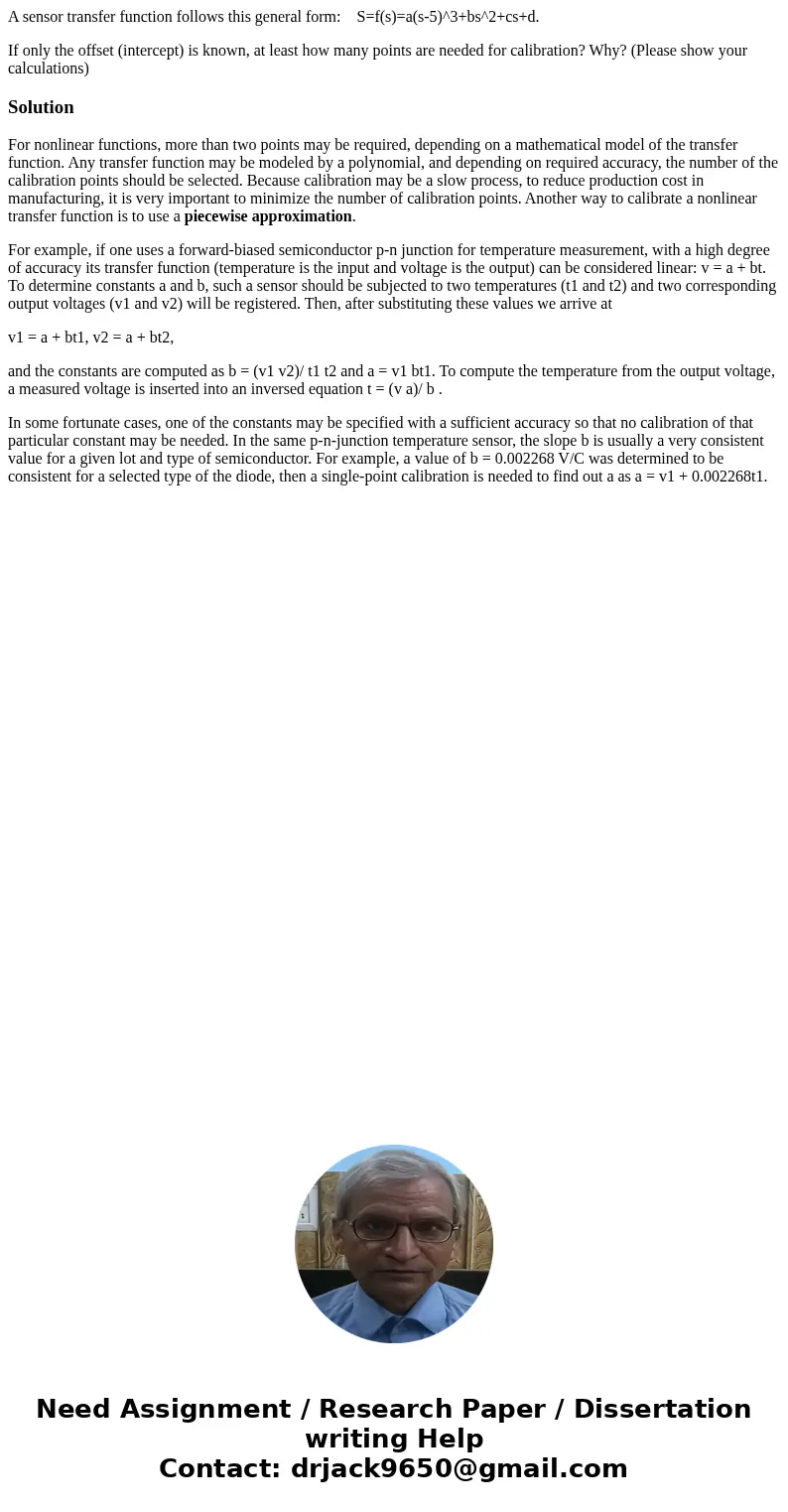A sensor transfer function follows this general form Sfsas53
A sensor transfer function follows this general form: S=f(s)=a(s-5)^3+bs^2+cs+d.
If only the offset (intercept) is known, at least how many points are needed for calibration? Why? (Please show your calculations)
Solution
For nonlinear functions, more than two points may be required, depending on a mathematical model of the transfer function. Any transfer function may be modeled by a polynomial, and depending on required accuracy, the number of the calibration points should be selected. Because calibration may be a slow process, to reduce production cost in manufacturing, it is very important to minimize the number of calibration points. Another way to calibrate a nonlinear transfer function is to use a piecewise approximation.
For example, if one uses a forward-biased semiconductor p-n junction for temperature measurement, with a high degree of accuracy its transfer function (temperature is the input and voltage is the output) can be considered linear: v = a + bt. To determine constants a and b, such a sensor should be subjected to two temperatures (t1 and t2) and two corresponding output voltages (v1 and v2) will be registered. Then, after substituting these values we arrive at
v1 = a + bt1, v2 = a + bt2,
and the constants are computed as b = (v1 v2)/ t1 t2 and a = v1 bt1. To compute the temperature from the output voltage, a measured voltage is inserted into an inversed equation t = (v a)/ b .
In some fortunate cases, one of the constants may be specified with a sufficient accuracy so that no calibration of that particular constant may be needed. In the same p-n-junction temperature sensor, the slope b is usually a very consistent value for a given lot and type of semiconductor. For example, a value of b = 0.002268 V/C was determined to be consistent for a selected type of the diode, then a single-point calibration is needed to find out a as a = v1 + 0.002268t1.

 Homework Sourse
Homework Sourse